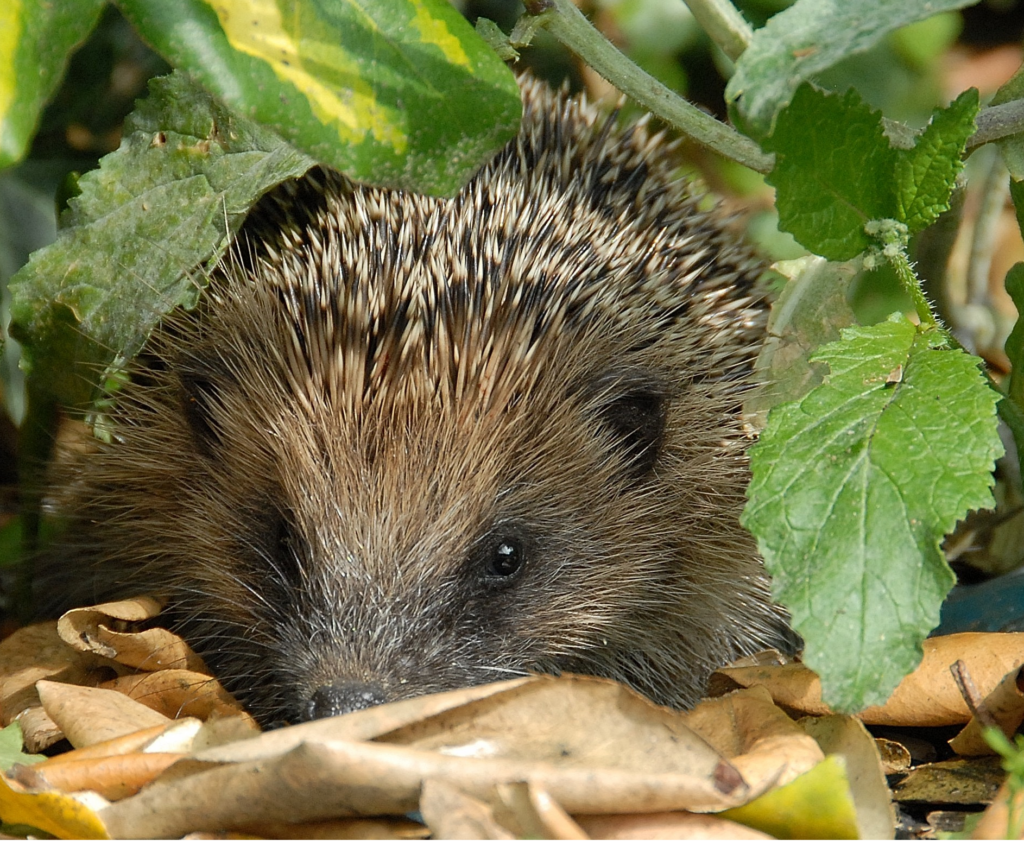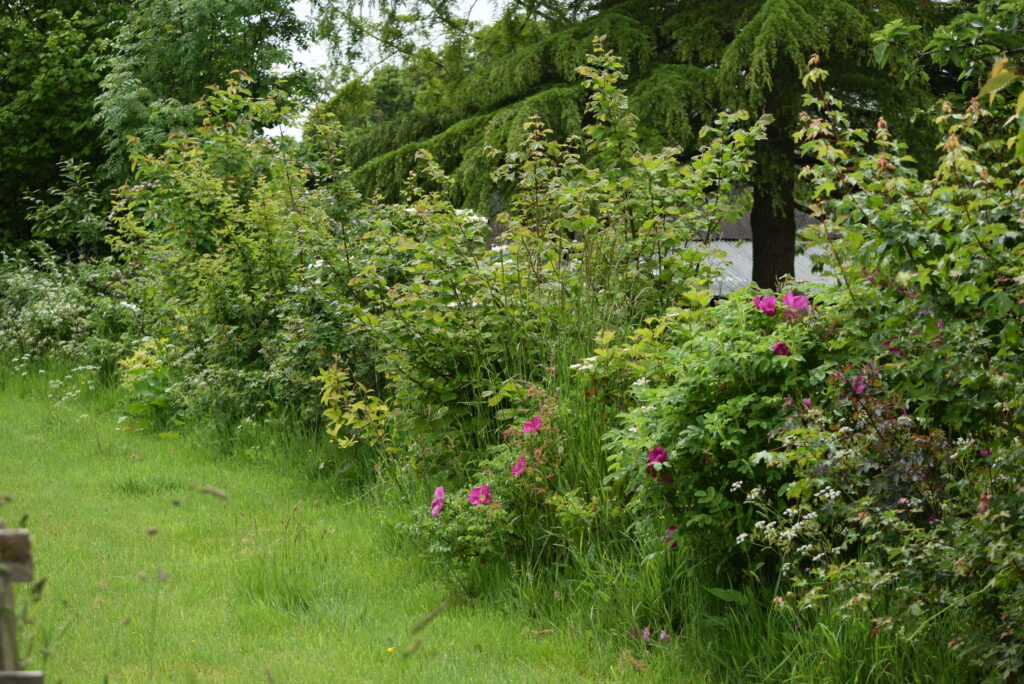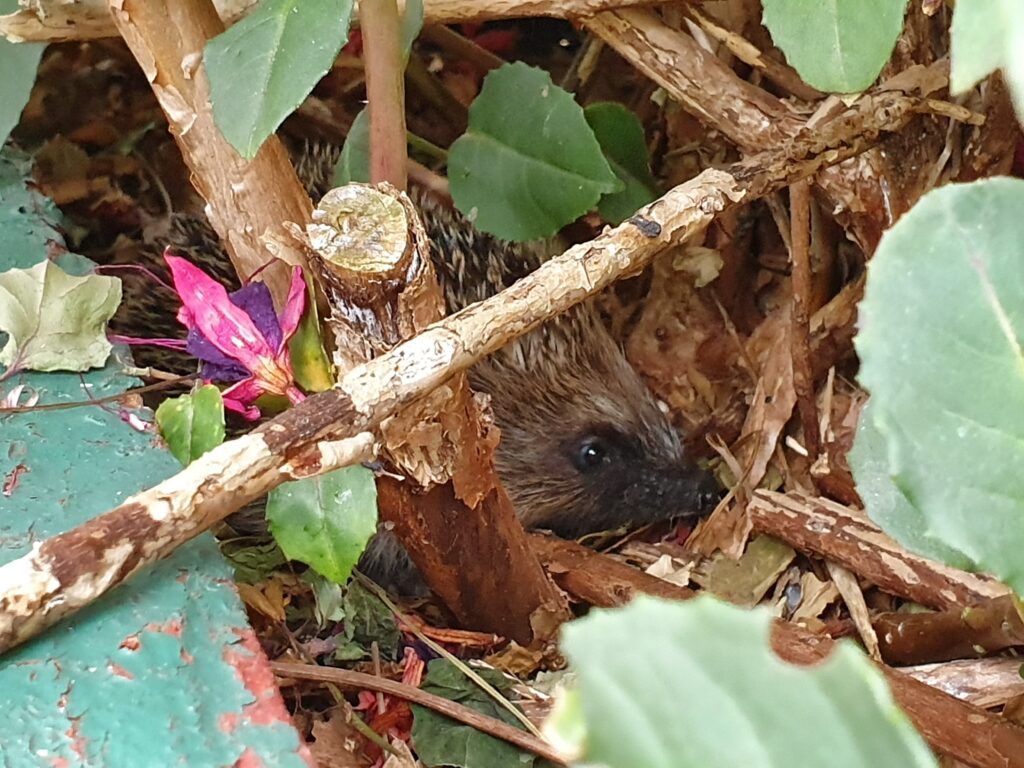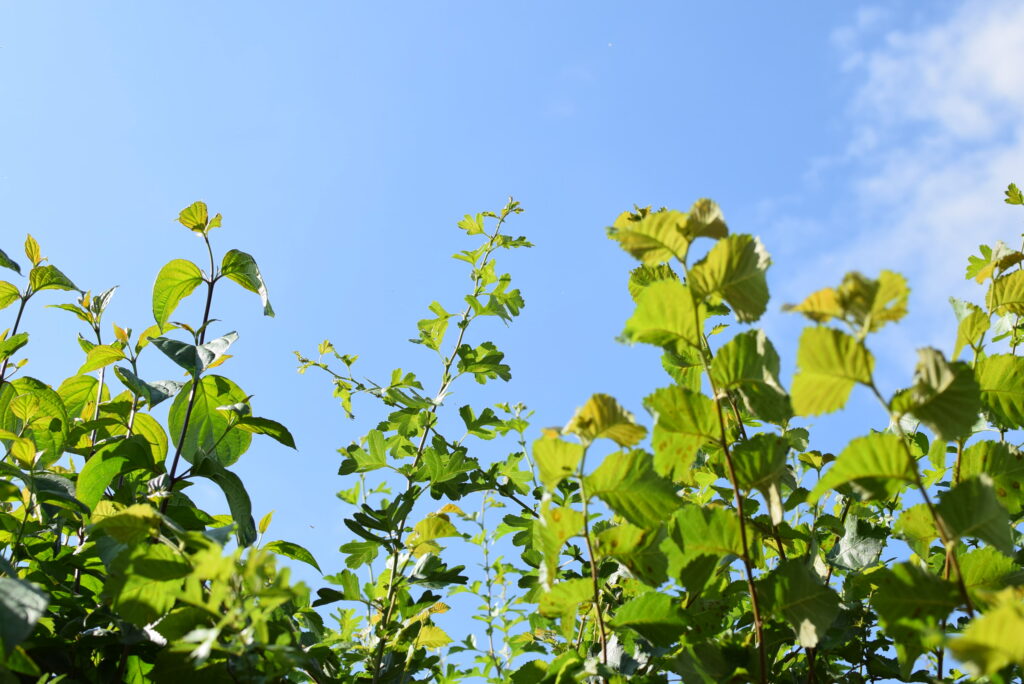Garden hedges for wildlife
30th March 2023
By Megan Gimber, PTES Hedgerow Officer
Whether you want to add a little privacy, shelter your garden, for beauty, or even to grow food, garden hedgerows can help. With a bit of know-how they can also make a fantastic garden habitat for hedgehogs and other wildlife.
With the right species choices and management, your garden hedge can offer blossom, fruit, a safe tangle of branches to nest in or a sheltered base for winter.

Planning a garden hedge
Gardens can be slightly space confined, and if this is a consideration it’s worth choosing your hedge plants carefully. You do not want to have to trim your hedge too frequently!
If privacy is part of the role of your hedge, consider using holly which is evergreen. Beech also retains its dead leaves on the hedge through winter when kept trimmed. These are both more wildlife friendly options than laurel or other similar shrubs.
We would recommend planting a mix of different species, preferably mostly native species. These will all provide slightly different things for wildlife; they will flower and fruit at different times of the year, as well as looking beautiful.
Great wildlife garden hedge species include beech, spindle, holly, field maple, hawthorn, hornbeam, hazel and alder. When the hedge is established, consider adding climbers such as wild honeysuckle or rose. If you have space, include some hedgerow standard trees in there too, such as an apple, crab apple or rowan.
Whilst many agricultural hedgerows include a thorny shrub species such as hawthorn, you might not want this in your garden depending on your situation. Certainly, if you have a small confined space, blackthorn should be avoided as it suckers and spreads.

Managing your garden hedge
New hedges
If you have planted a new garden hedge, you’ll want to slowly ‘raise it’ up so that it is thick and dense from the top to bottom. To do this, you will need to trim your hedge each year whilst it establishes, slightly higher each time. Cutting off the growing tips like this encourages the plants to put more effort into branching growth. So instead of racing upwards, you develop a dense tangle of branches right from the base to the top. Do not let your hedge grow to the desired height and then trim it. This will result in thin growth at the bottom, and eventually a dense thicket only at the top.
Having branching growth at the base of a hedge is incredibly important as it offers shelter for hedgehogs both for foraging, and for hibernation.

Existing hedges
All hedges need to be cut to keep them as hedges, but how often and how you cut your garden hedge can make all the difference for wildlife. Many of our flowering broadleaf species only flower on second year old wood and older, so if you trim your hedge to the same point each year it won’t flower.
There are two ways around this. If you have the space and enjoy the aesthetic, you can let your hedge grow for 2 or 3 years between cuts. This allows the plants to grow, flower and fruit, whilst also providing great nesting habitat.
If neatness is important, or if you are more limited by space, then instead you can simply trim your hedge slightly higher and wider each year. Even if this is just a few cm, it will ensure there is always an outer layer of your hedge that will flower and fruit. You may be surprised that even traditional urban hedging plants such as privet flowers when treated like this.
When cutting your hedge, aim for gently sloping sides, creating a flat topped ‘A’ shape. This helps keep the base of the hedge thick and dense – perfect for hedgehogs.
Timings
Avoid cutting your hedge between March and August (inclusive). This is prime bird nesting season and you may have nests that you can’t see in your hedge. Ideally, cut your hedges in January or February. This gives birds and mammals time to make the most of the fruit they provide to help get them through winter. Old, gappy, and leggy hedges can be brought back to vigour through laying or coppicing. Both of these practices help breathe new life into a hedge, perhaps counter intuitively. Rejuvenation will multiply the number of stems, re-growing from the base to once again make a dense thick hedge from the floor up.


